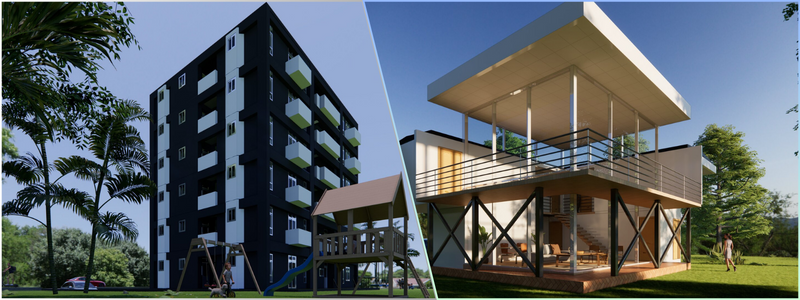This article explores 3D modeling, the different types and how companies use it. Sparking the interest and curiosity of your target audience has become more challenging than ever, especially now that thousands of options and lots of distractions fill the world. This is why it has become critical to use powerful strategies to keep up with the current demands if your ultimate goal is to emerge in today’s cutthroat industry and stay ahead of your competition. For the past decades, industries have settled with using videos and photos as the main features of their marketing campaigns.
While there is no denying that videos and photos are visually satisfying when trying to illustrate products, they only sometimes cater to all the senses, often leaving much room for interpretation. Today, 3D modeling design services have become one of the most potent and practical tools for product marketing and presentations. 3D modeling technology has been introduced previously. It’s just that it has yet to be extensively explored and used in the mainstream back in the day.
One of the most fascinating things about 3D modeling is its ability to bring things to life, looking like an exact representation of the object’s texture, color, and dimensions in reality. Simply put, 3D models offer viewers better perspective and depth, making them seem more real, something you can’t expect from traditional 2D images.
 Table of contents
Table of contents
RELATED: 3D Modeling: an overview of history & industry applications
The rise of 3D modeling techniques
The development and introduction of CAD and CAD design systems in the 1960s resulted in the rise of 3D modeling firms. Many mathematicians contributed to the evolution of technology by elaborating on the process of tracking and making geometry, which was effectively used in computers. It was in 19609 when Sketchpad’s creator, Ivan Sutherland, popularly called Robot Draftsmen, introduced 3D modeling. 3D modeling refers to the process of the development of three-dimensional visual representations of objects or characters with the use of specialized modeling software.
This technology produces realistic 3D images through the manipulation and alteration of the vertices, edges, and polygons of objects in virtual environments. Integrating real-time data into the models also makes them more realistic and alluring. The 3D modeling methodology is currently used in different fields and industries, including animation, technology, real estate, fashion, and medicine. The 3D models are developed with the use of other methods. However, several techniques are more extensively used by most companies, which include the following:
RELATED: Differences between 3D modeling, CAD, and BIM explained

3D CAD modeling
3D CAD modeling refers to creating virtual reality objects or computer models with properties that resemble those of their actual physical counterparts. Autocad designers can develop virtual models using the actual physical properties of the object, such as size, optical and physical properties, material, and weight. 2D drawings can be easily converted into 3D models using complex mathematical calculations. Using simulated parameters of 3D CAD models makes it possible to evaluate and verify the model’s actual behavior in a natural environment.
3D CAD can also help architectural companies, in particular, through visualization of 3D exterior designs and building projects. The CAD system can also perform various complex geometrical calculations. At the same time, the model is being made, which is why 3D CAD modeling is preferred among manufacturers, engineers, architects, and artists.
RELATED: Top 3D modeling catalogs for 3D design freelancers
3D exterior modeling
The 3D exterior modeling methodology is a type of 3D modeling used to study and visualize different plans and styles of varying building varieties. 3D exterior rendering services offer an overview of the ever-minute detail of a building, such as wall colors, parking shade, tree arrangement, street lighting, and the like. Exterior models also cover optimization, infrastructure, sustainability, and beautiful visualization.
These 3D exterior models help recommend modifying or changing the exterior layout and design to choose the most suitable model. Aside from the real estate industry, this 3D modeling methodology is also used for product modeling.
3D interior modeling
3D interior modeling is based on the interior design concept, digital drawings, and sketches. It is a type of 3D modeling used to define the spacious layout and floor plan of an apartment, building, or other structures. Interior models and the space layout cover other essential features such as well-oriented furniture, lighting, matching the color scheme, and other aspects of living.
RELATED: 3D interior design costs, modeling pricing, and rendering rates for buildings
Architectural modeling companies use 3D interior modeling to choose the most suitable design. Many real estate companies also use the technology to attract prospective buyers during marketing events. High-density resin casting, laser cutting, and stereolithography are also used for more detailed 3D interior models.
BIM modeling
BIM modeling refers to creating a digital representation of a facility’s functional and physical characteristics in the 3D space. BIM modeling services support different contracts, technologies, and tools. AEC professionals extensively use this type of 3D modeling to design, plan, construct, and maintain infrastructure and buildings efficiently. BIM models are being managed in files. All the necessary information is collected collaboratively and updated at the critical phases of the project.
This ability to share information supports smooth collaboration and enhances the design team’s decision-making process. The model’s outcome, steps, and scope can also be communicated more efficiently with the help of BIM. Productivity, cost optimization, energy-efficient design, and better visualization are among the key benefits that BIM modeling can offer.
RELATED: Should your company invest in architectural BIM modeling services for construction?

Non-uniform rational B-spline modeling (NURBS)
Non-uniform rational B-spline modeling, or simply NURBS, is the mathematical model tool that comes in handy in making 3D geometry through surfaces and curves. NURBS model uses 3D geometry that describes any curve, circle, 2D line, and shape to a complex 3D organic free-form solid or surface. NURBS can also handle modeled and analytical shapes. This can also represent standard geometry objects such as spheres, circles, and ellipses, and even free-form geometric objects such as people, cars, and the like.
NURBS is primarily used in engineering (CAE), manufacturing (CAM), and CAD. The flexibility and accuracy of NURBS make it a popular and in-demand 3D modeling tool. NURBS is also easily accessible in any computer program to offer smoother human interactions. This is also used in manufacturing, illustration, and animation processes.
Polygonal modeling
Polygonal modeling represents an object and its surface in the X, Y, and Z coordinates. The coordinates also depict the points’ position in a 3D shape that is defined as vertices, and as edges join these coordinates, a polygon shape is formed. A polygon mesh is developed by adjoining the polygons’ vertices, which simulate and shape an object. Polygon modeling is much faster compared to others. Once the motion data is applied, the model can perform any movement and be viewed from different angles.
RELATED: Do you know the three major types of 3D models?
Polygonal modeling is often the preferred option for developing scan line rendering and real-time computer graphics because it can precisely monitor every row of a model to achieve an overall shape. This particular type of 3D modeling works by forming the polygon mesh. It makes it challenging for novices because it requires good knowledge and familiarity with the polygon mesh theory.
Primitive modeling
Primitive modeling is the primary form of 3D modeling used by 3D modeling designers where primitive shapes are used, such as a cylinder, sphere, pyramid, box, and torus. These shapes serve as the building blocks for developing more complex objects in the 3D space. The fundamental Boolean operators are used to develop the desired shapes and layout. To come up with a new object, two shapes are either added, or a shape can be subtracted from the existing one.
RELATED: New product development and design: should your company work with a product design team?
Box modeling, for example, is initiated using the cuboid as the primitive that serves as the starting point. Extrusion or other similar operations are then used to achieve the final shape. Architectural companies use this type of 3D modeling to view a building’s final layout. Primitive modeling can help increase its speed and save time, unlike conceptual modeling.
Wireframe CAD modeling
Wireframe CAD modeling can visually represent physical objects in 3D computer graphics using curves and lines. With this type of 3D modeling, every object is being defined along with the edges because the designers are using metal wire to represent the 3D shape of the solid object. This process is known as wireframe modeling.
The wireframe modeling technique is used for solid surfaces, shape solids, construction, and high-quality solid representation. Wireframe models allow visualization of a 3D model’s underlying design structure. These renderings can be calculated easily and quickly, making them in applications that require a high screen frame rate.
RELATED: What is meshing in CAD, and how do companies and firms use meshing freelancers?
Hire 3D modeling pros at Cad Crowd!
As 3D modeling technology finds itself in different industries and fields, the need for experts is also rising. Cad Crowd is the number one go-to platform for everyone who needs help with their 3D modeling projects and bring them to life.
